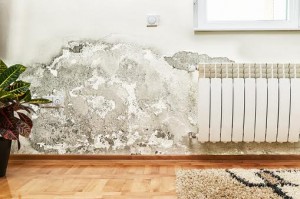
Bacterial Breeding Ground
Moisture is an excellent breeding ground for bacteria. They thrive in any damp organic matter like wooden floorboards or supports within the walls. These pockets can thrive even in the presence of antibacterial cleaning products, since scrubbing won’t always reach into the crevices where the moisture lurks.
Pest Proliferation
Mice, cockroaches, and dust mites all prefer damp environments. As these pests skitter about within your damp walls, they leave behind fecal matter, dander, and other allergens that can be a problem for asthmatics or people with allergies. If you can’t find an explanation for your stuffy nose, itchy eyes, sneezing, or respiratory troubles, it could be that damp walls have created an allergy breeding ground within your home.
Mould Multiplication
One of the most well-known risks of moisture infiltration is the growth and spread of mould. Mould can become entrenched, spreading throughout your walls and releasing spores that may make you sick. Additionally, mould can require intensive efforts to remove if not caught quickly enough. While most people know to be on the lookout for mould following a flood, not as many know to stay alert when there’s just a moisture increase.
Stopping Moisture Buildup
The easiest way to avoid damage from damp walls is to prevent the problem from happening in the first place. A good strategy for reducing moisture buildup is to maintain ventilation and avoid condensation. Making sure your kitchen, bathroom, and laundry appliances have adequate airflow, or at least an open window when in use, can do wonders for preventing water vapor from condensing and becoming moisture.
Tracking Moisture
It is not always easy to spot moisture, especially if the buildup is happening within your walls and floorboards but not near the surface. Fortunately, there are tools that can be used to spot growing problems before they spread. Thermal imaging and moisture detection devices are capable of measuring humidity content, finding sources of water infiltration, and even tracking the path of water migration back to the origin point. These devices can be intimidating to those unfamiliar, but fortunately there are experts available who can help.
Flood Services Canada is a leader in emergency flood and water damage remediation along with mould, sewage backup, and fire and smoke damage cleanup. Our rapid response teams can quickly get to work to both prevent and mitigate flood and leak damage and aid in the restoration process. We also provide services that can inspect property for moisture damage and risks of water infiltration. More information on our water damage restoration and prevention techniques can be found here.
